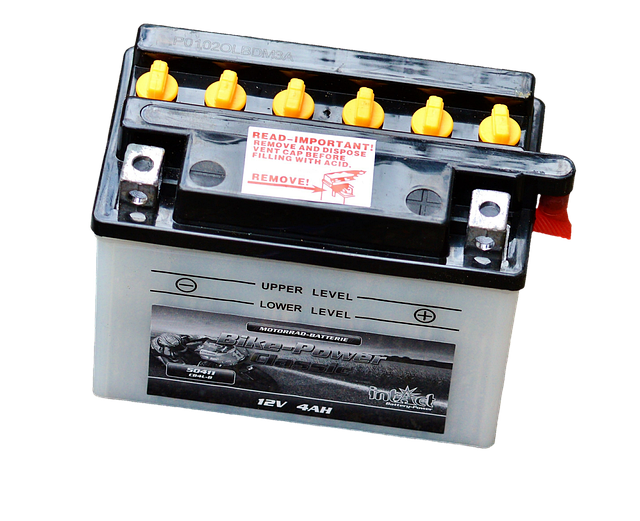Monitoring and understanding battery health is crucial for maintaining optimal performance and safety of electronic devices. Early signs of degradation include shorter battery life between charges, reduced talk time, slower charging, and inconsistent power delivery. Users can track battery health over time using built-in device tools and should be alert to these changes as they indicate when a battery replacement might be necessary. Regular software updates and maintenance can extend battery longevity, but eventually, all batteries will need to be replaced. It's important to recognize patterns of degradation and know the signs that signal it's time for a new battery, such as an inability to hold a charge, unexpected shutdowns, long charging times, visible swelling or bulging, and overheating. Replacing a battery can restore functionality and safety, so it's essential to follow the manufacturer's guidelines when performing a DIY replacement. This includes disassembling the device, removing the old battery safely, cleaning corroded contacts, installing the new battery correctly, and fully charging it before resuming normal use. Regular assessment of charge retention and capacity is key for making informed decisions about when to replace the battery and for ensuring that the device operates efficiently and reliably.
When the pulse of your device falters, it’s often a sign that its battery is on its last legs. Understanding the warning signs of a weak battery is crucial for maintaining your gadgets’ efficiency and longevity. This article sheds light on identifying early indicators of battery degradation, common signals your device may need a new battery, and the importance of charge retention and capacity in assessing overall health. Learn how to safely replace your battery to restore peak performance, ensuring your devices remain reliable companions in our tech-driven world. Replacing a battery can seem daunting, but with the right knowledge, it becomes an empowering DIY task or a smart maintenance choice when opting for professional service.
- Identifying the Early Indicators of Battery Degradation Before Replacing Battery
- Common Signs Your Device Needs a New Battery
- The Role of Charge Retention and Capacity in Assessing Battery Health
- How to Safely Replace Your Battery for Optimal Performance
Identifying the Early Indicators of Battery Degradation Before Replacing Battery

When a device’s performance starts to wane, it’s often an indication that its battery is degrading. To proactively address this issue and avoid unexpected power loss, identifying early signs of battery degradation is crucial. Monitoring battery health through available tools on smartphones or laptops can provide insights into the battery’s performance over time. A notable decline in battery capacity, characterized by shorter periods of usage between charges or a noticeable reduction in talk time, could be an early indicator that it’s nearly time to replace battery. Additionally, batteries tend to degrade unevenly, which may result in slower charging or inconsistent power delivery, further signaling the need for a battery replacement. By recognizing these subtle changes, users can plan for a battery replacement at their convenience rather than experiencing a sudden failure. Regular software updates and proper maintenance can also help maintain optimal battery performance, but eventually, all batteries will require replacement. Therefore, staying vigilant and understanding the typical patterns of battery degradation allows for timely intervention and ensures that devices operate efficiently, minimizing downtime and extending the overall lifespan of the gadget.
Common Signs Your Device Needs a New Battery

When a device’s battery performance begins to wane, it sends out clear signals that it may be time for a replacement. One of the most evident signs is a noticeable reduction in the battery’s capacity to hold a charge. If your device used to last two days on a single charge and now struggles to make it through a day, this could indicate that its battery is nearing the end of its lifespan. Another common issue is inconsistent charging patterns; for instance, if your device sometimes charges quickly and other times seems to drag on, this can be a sign of battery degradation. Additionally, if you notice that your device shuts down unexpectedly under normal usage or takes significantly longer to charge than usual, it’s a strong indicator that the battery’s health has diminished and a replacement battery may be necessary.
Furthermore, pay attention to any warning messages that appear on your device’s screen. Most smartphones and laptops come with built-in diagnostics that alert users when the battery’s performance is below optimal levels. Such alerts often suggest calibration or replacing the battery. Uneven swelling or bulging of the battery casing, which can be a safety hazard, is another clear sign that it’s time to replace your device’s battery. Lastly, if you experience persistent issues with overheating during normal operation, this could also point to a failing battery, as aging cells can lose their ability to regulate temperature effectively. Addressing these signs promptly not only extends the life of your device but also ensures safety and optimal performance.
The Role of Charge Retention and Capacity in Assessing Battery Health

When evaluating the health of a battery, two critical factors stand out in assessing its performance and longevity: charge retention and capacity. Charge retention refers to the ability of a battery to hold a charge over time when not in use. A battery with high charge retention will maintain its voltage without significant loss, indicating that it is holding onto the stored energy well. Conversely, a weak charge retention could signal that the battery is beginning to degrade. This aspect is particularly important for devices that are used intermittently or are subject to periods of inactivity.
Capacity, on the other hand, measures the total amount of energy a battery can store and deliver under particular conditions. As batteries age, their capacity diminishes. A new battery may have a full capacity, allowing it to operate at peak efficiency throughout its lifecycle. However, as time passes or after numerous charge-discharge cycles, the battery’s ability to hold and supply this energy decreases. Monitoring both charge retention and capacity is crucial when determining if a replaceable battery still performs adequately or if it’s time to consider a replacement. Regularly checking these parameters can help prevent unexpected power losses and ensure your devices operate as intended, which is particularly relevant for critical applications where battery failure could lead to significant inconvenience or even safety issues.
How to Safely Replace Your Battery for Optimal Performance

When your device’s battery performance starts to wane, it may be time to consider a replacement. To ensure optimal performance and longevity from your new battery, it’s crucial to perform the replacement process safely. Firstly, consult the user manual or manufacturer guidelines specific to your device for precise instructions on how to proceed with the battery replacement. This will typically involve disassembling the device, carefully removing the old battery, and preparing the slot for the new one. It’s essential to handle both the old and new batteries with care to avoid short circuits or electrical shocks. Once you have the device disassembled to access the battery, use a multimeter to check its health if possible; a degraded battery may have a significantly lower voltage than a fully charged, healthy one. After safely removing the old battery, clean the contacts and the area where the battery sits to remove any corrosion or debris that could impede performance. Then, install the new battery with precision, ensuring it is seated properly and making good electrical contact. Reassemble your device, taking care to follow the reverse order of disassembly to avoid missing any components. Finally, charge the new battery according to the manufacturer’s recommendations before using your device extensively. By following these steps, you can replace your battery safely and effectively, ensuring that your device operates at peak efficiency.
When a battery starts to falter, recognizing its warning signs early is key to maintaining your device’s performance and longevity. This article has outlined the critical indicators of battery degradation and the importance of understanding charge retention and capacity as they relate to your device’s health. Should you notice any of the common signs mentioned, such as reduced time between charges or an increased number of charging cycles, it may be time to replace your battery. Following the guidelines for safe battery replacement ensures optimal performance and longevity for your gadget. Remember, a proactive approach to battery maintenance can prevent unexpected device downtime. Always refer to the manufacturer’s guidelines when considering a battery replacement to ensure the best results.
